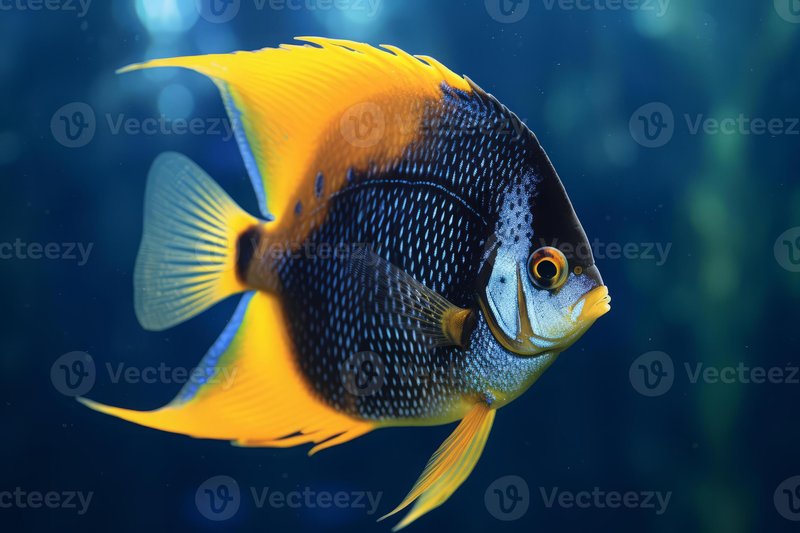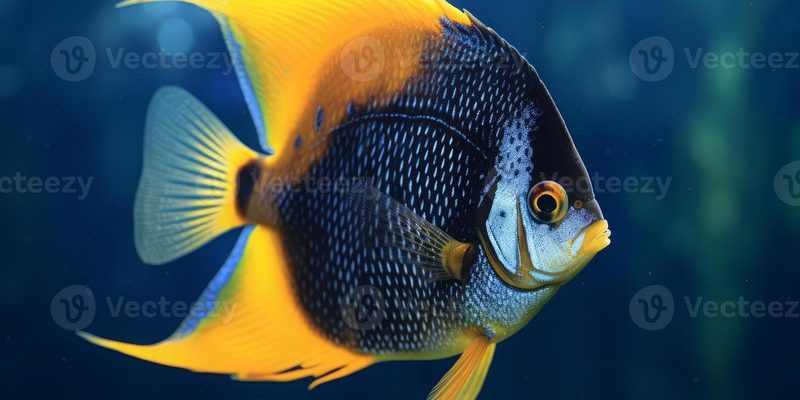
Imagine a beautiful underwater garden, a place filled with life, where angelfish swim amid colorful corals. Just like any garden, these ecosystems have their ups and downs. Unfortunately, angelfish populations are under threat due to various factors. Pollution, habitat loss, and climate change are just a few of the culprits. In this article, we’ll explore whether angelfish are indeed endangered and what steps are being taken to protect them.
Understanding Angelfish Species
Angelfish belong to the family Cichlidae and come in several species, with the Freshwater Angelfish and the Marine Angelfish being the most well-known. They’re popular in aquariums and are often sought after for their beauty. However, not all angelfish species share the same fate.
1. Freshwater Angelfish: These fish thrive in slow-moving waters of the Amazon Basin. While they are quite common in the aquarium trade, their wild populations have started to dwindle. Habitat destruction from agricultural practices and pollution is putting pressure on their numbers.
2. Marine Angelfish: Found in warmer waters, these fish often inhabit coral reefs. They are vital for the health of these ecosystems by feeding on algae and other organisms. Sadly, coral reefs are facing severe threats due to climate change, making marine angelfish vulnerable as well.
Knowing the different species of angelfish is important because conservation efforts may vary depending on their habitats and specific threats.
Are Angelfish Endangered? The Current Status
To answer the main question, some angelfish species are at risk, while others are classified as “Least Concern.” Organizations like the International Union for Conservation of Nature (IUCN) monitor these statuses. For instance, the Blue Angelfish is listed as “Near Threatened” due to habitat degradation and overfishing.
– Threats to Populations: Pollution and coastal development lead to habitat loss. As ecosystems become damaged, angelfish can struggle to find food and shelter. Overfishing, particularly of marine species, exacerbates these problems.
– Climate Change: Rising ocean temperatures and increased acidification affect coral reefs, disrupting the delicate balance of these habitats. Without healthy reefs, marine angelfish have nowhere to thrive.
Knowing whether angelfish are endangered is crucial for conservationists and enthusiasts alike. Protecting them means ensuring a healthier ocean ecosystem overall.
Conservation Efforts for Angelfish
In response to the alarming situation, conservationists are stepping up efforts to protect angelfish populations. Various initiatives aim to address the factors threatening these beautiful fish.
1. Habitat Restoration: Organizations dedicated to marine conservation are working to restore coral reefs by planting new corals and creating marine protected areas. These spaces help shield angelfish and other marine life from harmful activities like fishing and pollution.
2. Sustainable Fishing Practices: Some fisheries are beginning to adopt sustainable practices to ensure fish populations remain healthy. Educating fishers about the impacts of overfishing can lead to better policies and protection for angelfish species.
3. Raising Awareness: By educating the public on the importance of angelfish and their habitats, awareness campaigns can encourage eco-friendly practices among aquarium enthusiasts and fish collectors.
Conservation efforts are paramount for ensuring that future generations can enjoy the splendor of angelfish in their natural habitats.
The Role of Aquariums in Conservation
Aquariums play a significant role in angelfish conservation. Not only do they showcase these stunning fish, but many also engage in breeding programs and educational efforts.
1. Breeding Programs: Some aquariums breed angelfish in captivity to help support wild populations. This provides a sustainable source of fish for the aquarium trade, reducing the pressure on wild populations.
2. Education and Research: Aquariums often conduct research on angelfish and their habitats. By sharing findings with the public, they raise awareness about the challenges these fish face and the actions needed to protect them.
3. Community Engagement: Many aquariums partner with local communities to promote conservation efforts. This fosters a sense of stewardship and helps people understand the importance of preserving aquatic ecosystems.
The work of aquariums highlights the importance of collaboration in conservation and encourages people to take action.
How You Can Help Angelfish Conservation
You might be wondering, “What can I do to help angelfish and their habitats?” There are several simple ways you can make a difference.
1. Choose Sustainable Products: If you’re an aquarium enthusiast, look for responsibly-sourced fish and supplies. Ensure the products you buy are eco-friendly and support sustainable practices.
2. Get Involved: Join local conservation groups or participate in clean-up events at your nearby beaches or rivers. Protecting these habitats directly benefits angelfish and other wildlife.
3. Educate Others: Share your knowledge about angelfish and their conservation status with friends and family. The more people who understand the importance of these fish, the greater the support for conservation initiatives.
Your actions, however small, can contribute significantly to the protection of angelfish and their ecosystems.
Looking Ahead: The Future of Angelfish
The outlook for angelfish will largely depend on our collective efforts to protect their environments and address the various threats they face. While some species are at risk, there’s hope through ongoing conservation work and increased awareness.
1. Changing Policies: Advocating for stronger environmental protections can create a safer future for angelfish. Supporting organizations that focus on marine conservation makes a difference in shaping policies.
2. Community Involvement: Engaging local communities in conservation efforts fosters a sense of responsibility. The more people are involved, the stronger the support for protecting angelfish habitats becomes.
3. Innovation in Conservation: Advances in technology and science can aid conservation efforts. For example, monitoring fish populations using drones or underwater cameras can provide invaluable data for research.
The future of angelfish depends on our commitment to preserving their habitats. By working together, we can ensure these captivating fish continue to thrive for generations to come.
In conclusion, while some angelfish are facing challenges, there are robust conservation efforts underway. With the right actions and awareness from both individuals and communities, we can help safeguard the future of these remarkable fish and the underwater ecosystems they inhabit. Let’s be part of the solution!

